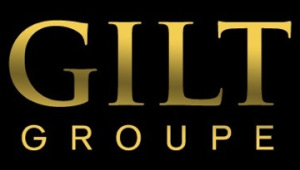Since 2007 Gilt has introduced discount shopping in a new way. As you are aware by now, a normal sales happens only at the end of every season. Normal discount sales can range from 20 to 70 percent and people wanting to buy clothing or shoes tend to wait and say to themselves, "I'll wait until it goes on sale."
The people at Gilt saw that this trend grew large during the down fall of our economy. Time was essentially everything for Gilt's success. The company saw an opportunity and put together a team to find the best designers at a discounted price for their consumers. With the help of the internet, Gilt has marketed through social media platforms and reached people all over the world. "Business-to-business electronic commerce is the use of the internet to facilitate the exchange of goods, services, and information between organization."
Online success is measured by 3 categories. First would be Recency, which relates to the fact that customers who have made a purchase recently are more likely to purchase again in the near future than customers who haven't purchased for awhile. This is very true since Gilt is a members base website and these insiders know they are getting the best deal around. Second would be Frequency, this information helps marketers identify frequent purchasers who are definitely more likely to repeat their purchasing behavior in the future. Since Gilt's business platform is a members only e-commerce store, every member's purchases can be retrieved and marketers can react to spending patterns and habits. Lastly, our third category of measuring online success is monetary value. The monetary value of sales is important because big spenders can be the most profitable customers for a business. Gilt acknowledges their top customers and has a program that allows top spenders privileges that a normal member does not have access too.
Sunday, December 9, 2012
Sunday, December 2, 2012
Chapter 8 - Segmenting and Targeting Markets
Gilt uses strategies for segmenting markets such as psychographic segmentation. The variables of psychographic segmentation are personality, motives, lifestyles, and Geodemographics.
As a members based business, Gilt can acquire detailed information on all of their members spending patterns. They have developed internal software that can track a members favorite brands, categories, and their average sales transaction. This psychographic segmentation would fall under the category of "personality." The book states, "Personality reflects a person's traits, attitudes, and habits, Clothing is the ultimate personality descriptor. Fashionistas wear high-end, trendy clothes, and hipsters enjoy jeans and tee-shirts with tennis shoes. People buy clothes that they feel represent their personality and give others an idea of who they are." With knowing how a member shops, Gilt can adjust and or create special newsletters for a specific individual. For example, I recently purchased some ties and shoes from the website. Since then, I have noticed the new newsletters are featuring new dress shirts, socks and suits. As a marketer, you want the consumer to subconsciously say to themselves, "I just bought a tie and a shoes, maybe I need a new suit and dress shirt." Not only have they featured new categories on these new newsletters to me, but they have also featured new shoes and ties as well.
It is very remarkable that a marketer can easily react and adjust how they feature specific information based on a individuals spend habits. This approach has been proven successful. The algorithmic software is something regular retailers cannot implement. Other department stores looking to reach out to new consumers can't access these type of big-spending consumers the same way. The CEO of Gilt states, "A Sak's or Macy's can't do this because they do not have a membership-only model. The only people who can do this area are flash sales types and Facebook."
As a members based business, Gilt can acquire detailed information on all of their members spending patterns. They have developed internal software that can track a members favorite brands, categories, and their average sales transaction. This psychographic segmentation would fall under the category of "personality." The book states, "Personality reflects a person's traits, attitudes, and habits, Clothing is the ultimate personality descriptor. Fashionistas wear high-end, trendy clothes, and hipsters enjoy jeans and tee-shirts with tennis shoes. People buy clothes that they feel represent their personality and give others an idea of who they are." With knowing how a member shops, Gilt can adjust and or create special newsletters for a specific individual. For example, I recently purchased some ties and shoes from the website. Since then, I have noticed the new newsletters are featuring new dress shirts, socks and suits. As a marketer, you want the consumer to subconsciously say to themselves, "I just bought a tie and a shoes, maybe I need a new suit and dress shirt." Not only have they featured new categories on these new newsletters to me, but they have also featured new shoes and ties as well.
It is very remarkable that a marketer can easily react and adjust how they feature specific information based on a individuals spend habits. This approach has been proven successful. The algorithmic software is something regular retailers cannot implement. Other department stores looking to reach out to new consumers can't access these type of big-spending consumers the same way. The CEO of Gilt states, "A Sak's or Macy's can't do this because they do not have a membership-only model. The only people who can do this area are flash sales types and Facebook."
Subscribe to:
Comments (Atom)
